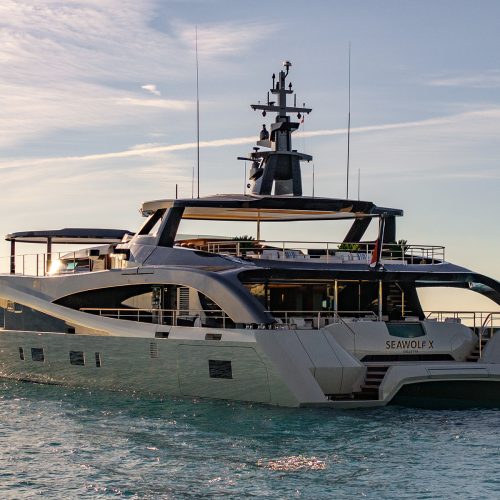

At Santi, Pasta Titan Michael White Makes His Grand Comeback
The Michelin-decorated chef makes a valiant return to Manhattan with a restaurant concept informed by nostalgia, travel, and an insightful menu

The lighting sculpture by L'Observatoire International. Photo: Seth Caplan
Chef Michael White practically defined Manhattan’s modern Italian restaurant scene throughout the 2010s while presiding over the rarefied kitchens of Marea, Ai Fiori, and the erstwhile Osteria Morini. But when the pandemic struck, the decorated pasta master—beyond holding five Michelin stars simultaneously, he was knighted by the Italian government with the Cavaliere dello Stato Italiano distinction for contributions to culture—wanted something new. He soon decamped to the Hamptons, launched BBianco Hospitality with longtime friend and veteran attorney Bruce Bronster, and opened several critically acclaimed restaurants in adventurous locales: Mirabella at Fontainebleau Miami Beach, Paranza on Atlantis Paradise Island.
Yet Manhattan beckoned. “While the hiatus in East Hampton was invigorating and productive, I always planned to return home to New York City and reestablish a flagship,” White tells Galerie. “But the time and place had to be right.” Kismet struck when a familiar address in the heart of Midtown hit the market: a ground-floor storefront tucked behind a tree-lined concrete plaza at 520 Madison Avenue, the Tishman Speyer building where White’s former flagship Alto earned a New York Times three-star review before shuttering in 2011. Nostalgia triumphed. White soon got to work transforming his old stomping ground into Santi, a stellar dining room sure to delight Midtown’s power lunchers and anyone with a taste for fine Italian cuisine.
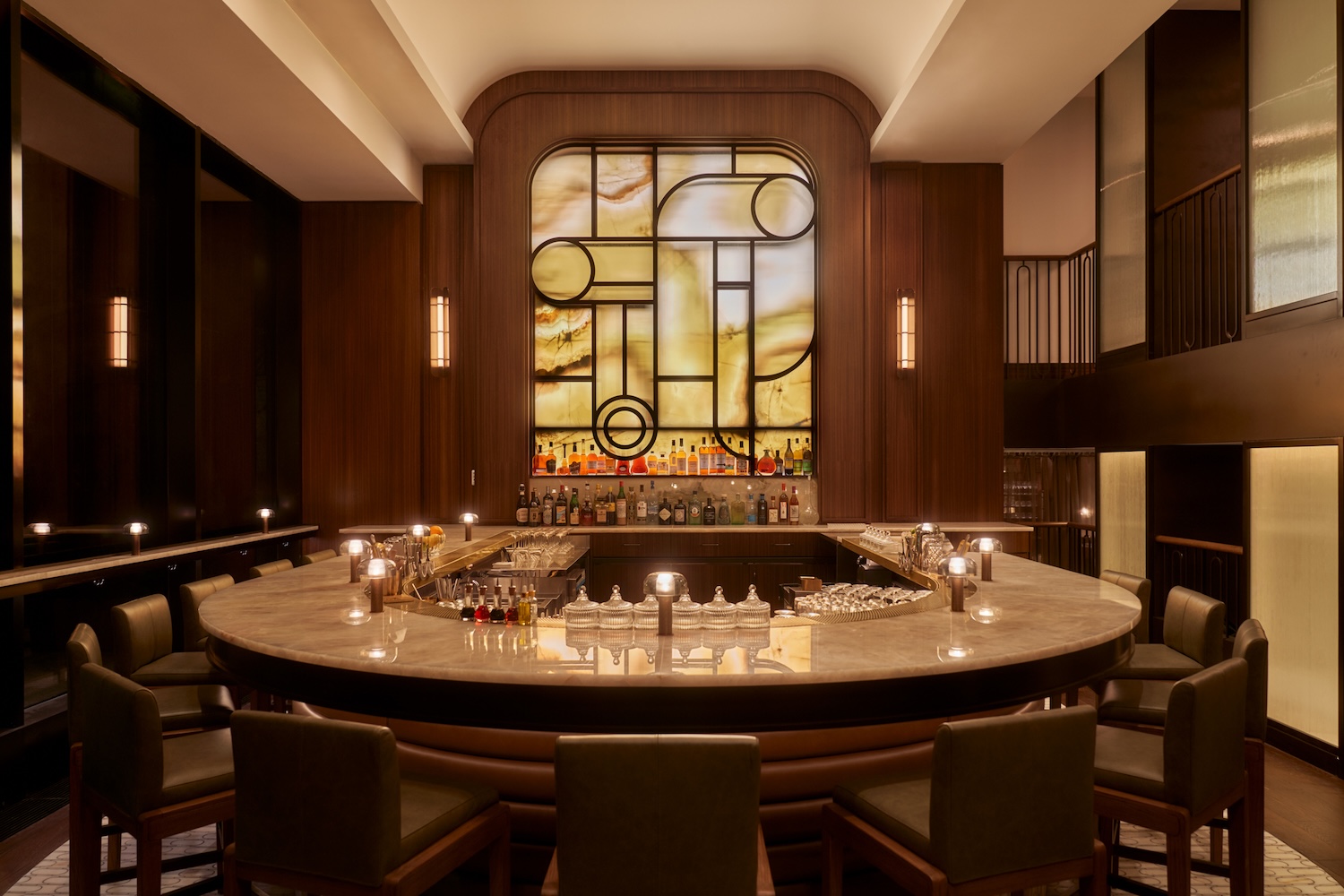
The entry bar’s onyx backsplash. Photo: Seth Caplan
Design-wise, the familiar footprint allowed White to iron out spatial kinks lingering in his memory from Alto. And throughout Santi’s lavishly appointed dining room, there are remarkably few to be seen. An ethereal mood pervades thanks to the transportive touches of hospitality firm Michaelis Boyd, which enveloped the entire restaurant in luxurious materials evoking the warmth and lived-in patina of a countryside Italian villa. The entry’s dramatic horseshoe bar immediately commands awe with a striking backsplash framing onyx stone within antique bronze metalwork, channeling Art Deco élan. Half-moon leather banquettes rhythmically unfurl in the downlit lower level, which eschews over-the-top gestures typical of New York City’s spectacle-driven fine dining landscape in favor of understated touches like ambient lighting and biophilic materials.
Despite the pared-down palette and humble inspirations, Michaelis Boyd still managed to weave in subtle theatrics with the stylish panache of their finest hospitality projects. Anticipation builds as lucky guests journey through the lower level to the “courtyard,” a breathtaking double-height dining room shrouded in a hand-painted cloudscape surrounding a shimmering glass chandelier by L’Observatoire International. “Every restaurant thrives on energy and presence,” says Rina Kukaj, partner at Michaelis Boyd, who notes the courtyard’s far corner opposite the mezzanine as her favorite seat. “It’s the ideal vantage point to take in the energy, from guests arriving to dishes being served, while observing the movement above and intimacy below.”
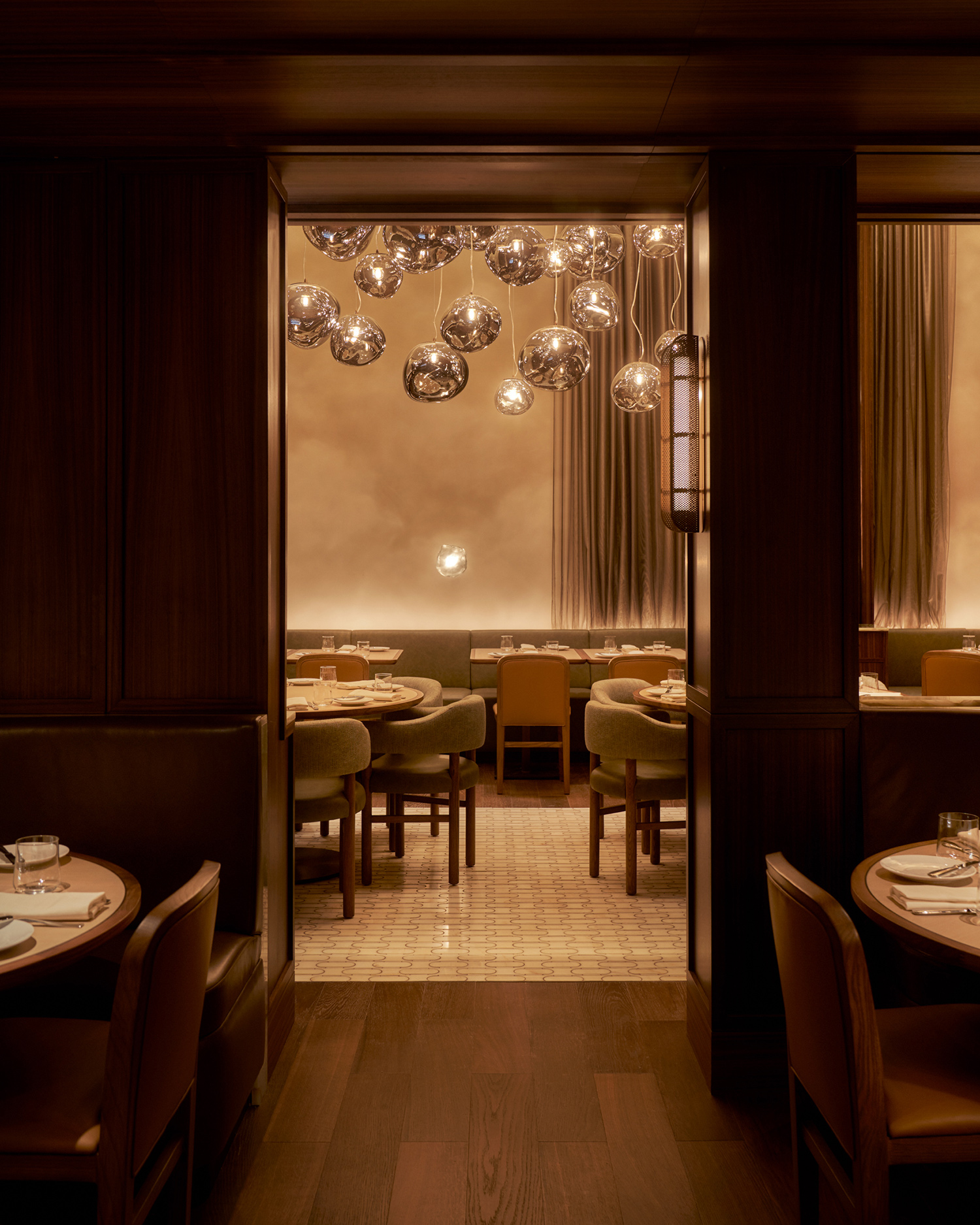
The lower-level dining room leading to the courtyard. Photo: Seth Caplan
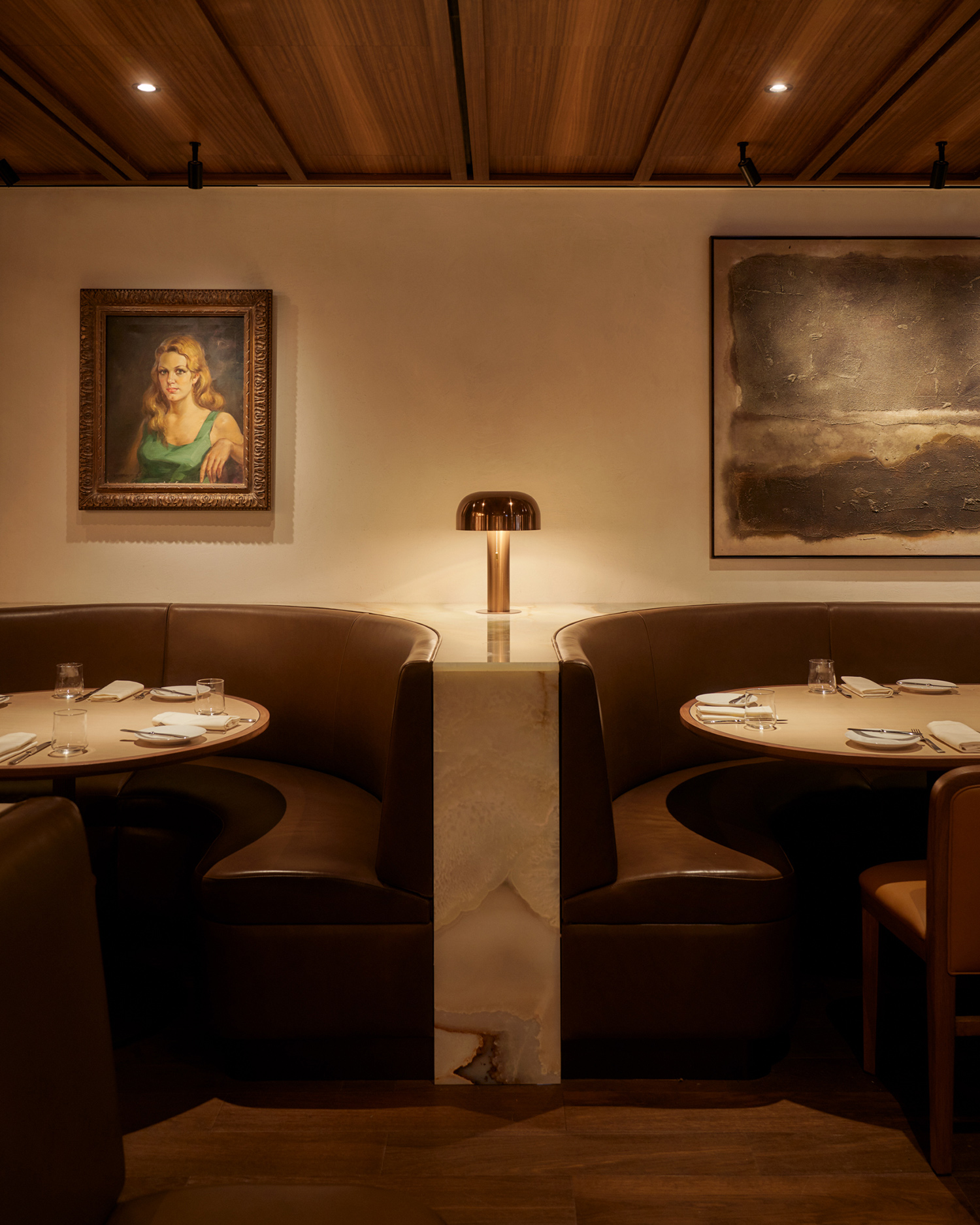
The dining room’s art collection was sourced from Hamptons estate sales. Photo: Seth Caplan
Intimacy also informs Santi’s trove of fine art, which White and Bronster sourced from their personal collections and Hamptons estate sales. A portrait wall hugging the spiral staircase to the mezzanine showcases a haunting array of portraits; QR codes reveal each backstory. One standout is the Vagabond Mirror, an ornate 11-foot piece Bronster found buried in the backyard barn of a Southampton estate. The restoration process, which unearthed the 19th-century object’s original gold leaf coat, also revealed its winding journey from the United States to France to Italy and back again, mirroring the travels of Chef White himself. “We picked art and objets that reflect our appreciation of travel, fine cuisine, and hospitality,” Bronster tells Galerie. Many pieces carry personal significance, such as a photograph of cowboy boots that appeared on an album by country band Pure Prairie League, which Bronster loved when he was younger.
Though Santi heralds the grand return of one of New York City’s most celebrated culinary titans, devoted acolytes of White’s dishes should expect curveballs. “The culinary arts are a constantly evolving practice,” he explains. “I always want to be at the forefront of my craft, and it would be of no interest to me to rest on great dishes of the past.” That meant forgoing coveted staples—Marea’s iconic bone marrow fusilli entangled with octopus, for example—and treading new culinary waters informed by formative years spent honing his craft in the South of France and Italy’s San Domenico and Emilia-Romagna regions. Revisiting these locales in the nearly three years he and Bronster spent developing Santi afforded White “a fresh perspective and new level of excitement,” he says. “I got to show Bruce what real Italian cuisine was all about, from local trattorias and independent butchers to food at highway rest stops.”
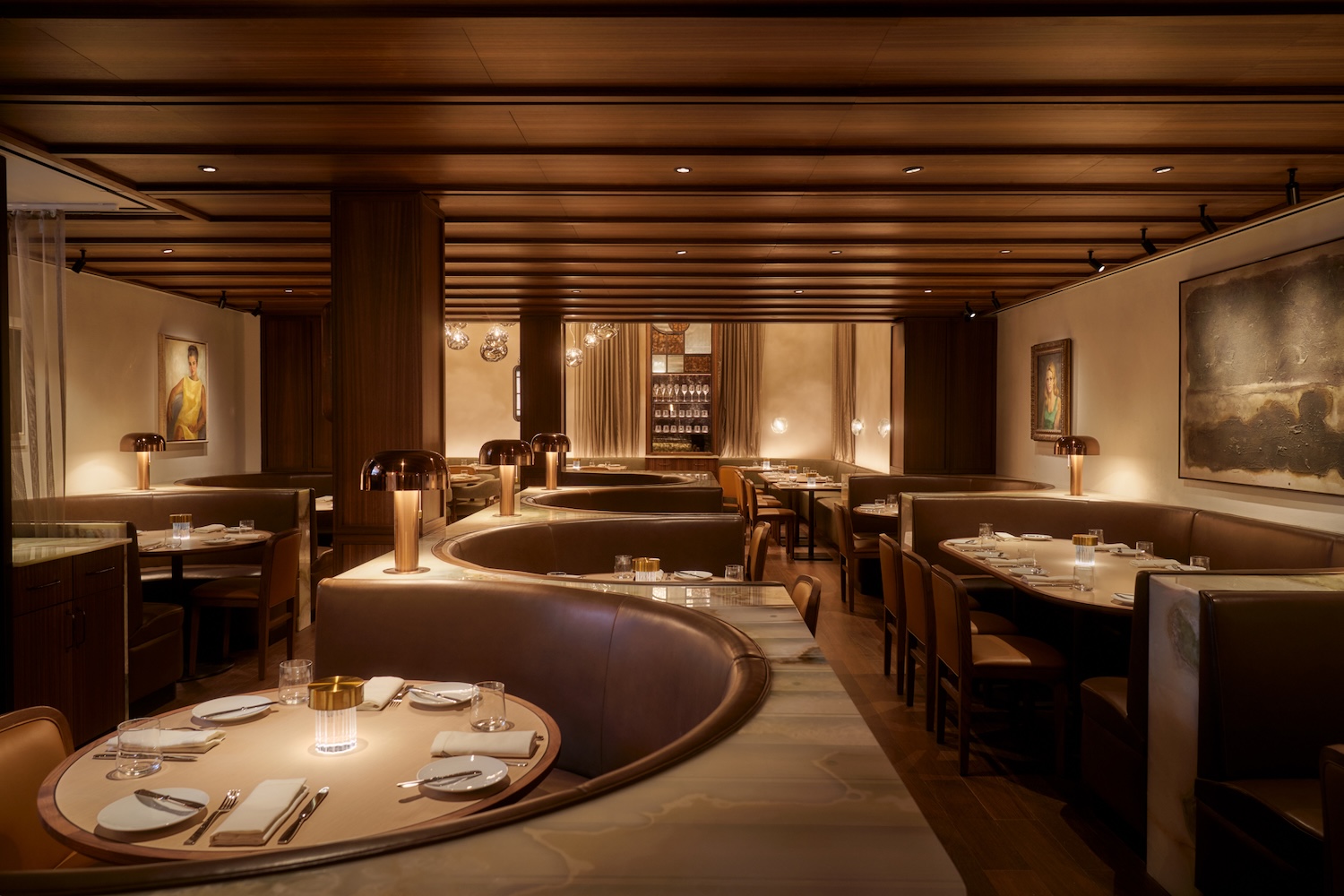
Onyx encases the dining room’s half-moon banquettes. Photo: Seth Caplan
Those sundry influences gleam on a tightly curated pan-Italian menu informed by French techniques and influences drawn from White’s time living and working in Imola, the Amalfi coast, and the South of France. The handmade pastas, of course, take center stage. Each of the nine dishes slyly reference White’s formidable résumé but feature entirely new formulas, the seafood-heavy recipes owing to new relationships with Long Island fishermen. “We spent time in the Italian countryside,” White says, “and brought home a sense of the locality and ephemerality of regional Italian food.”
Tri-colored garganelli—the first dish White mastered as a line cook at San Domenico—are tossed with Nantucket scallops, its quill-shaped tubes bathed in a creamy broth made from scallop muscles and garnished with caviar that lingers on the tongue. Squid-ink pansotti practically luxuriates in a rich pomodoro sauce mixed with lobster stock. The generously portioned rabbit for two features a roasted saddle and confit legs cappellacci. Anything from beverage manager James Lamb’s menu of Italian-inflected house specialties makes for apt pairings, as does a robust amari selection and classic wines spanning France, Italy, Burgundy, and Brunello by beverage director Andreina Mayobre and Hak Soo Kim.
Santi’s magic, of course, lies in its name. The word, which translates to “saint” in Italian, recalls a fond memory of White’s culinary mentor, Gianluigi Morini, the chef who helmed the kitchen at San Domenico. Eager to taste the latest dishes from the kitchen, he would wave off a plate and utensils and say “the hands of chefs are like the hands of saints… le mani santi.”
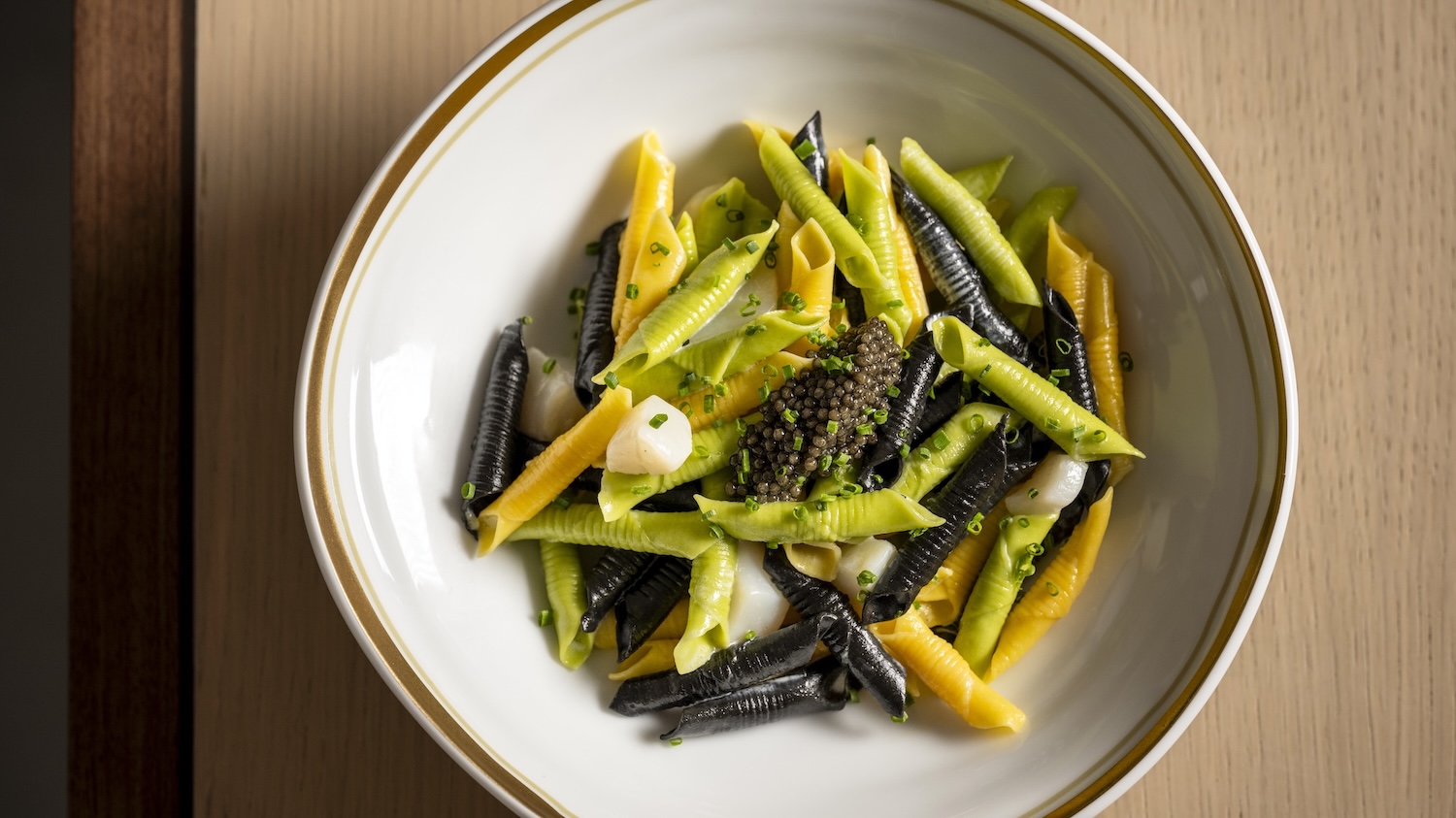
Garganelli. Photo: Evan Sung
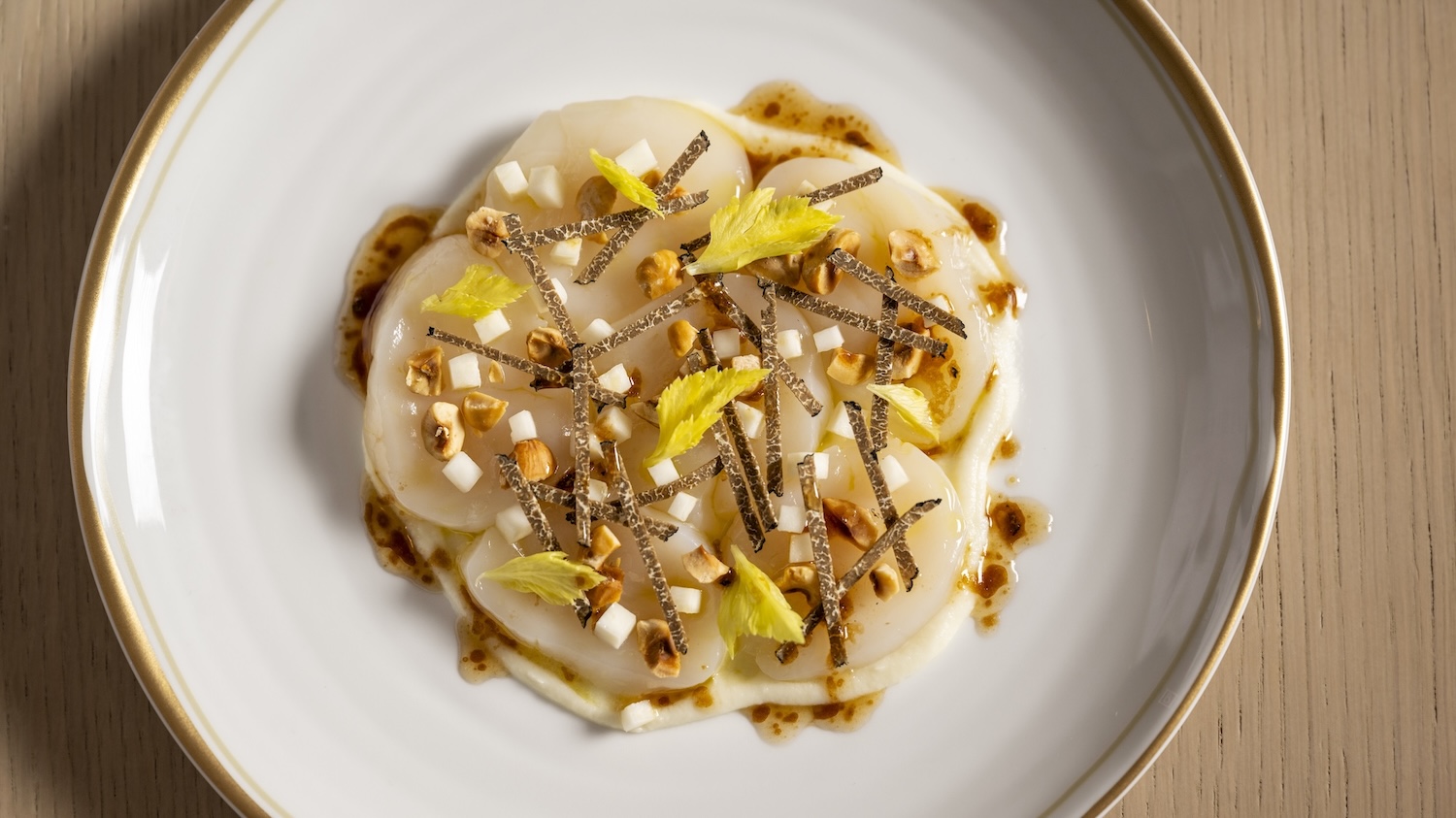
Canaestrelle. Photo: Evan Sung

Gamberi Rosso. Photo: Evan Sung
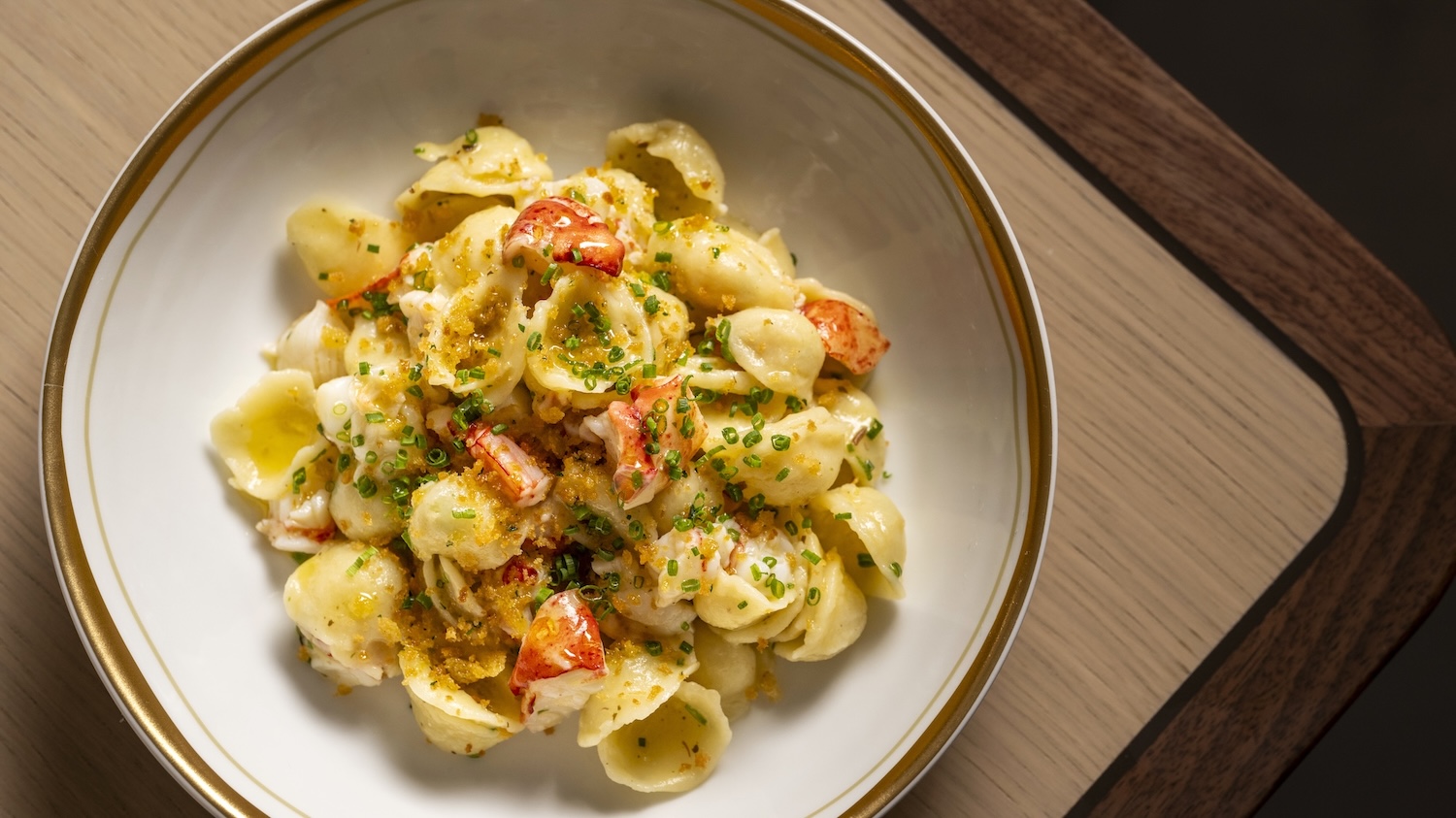
Orecchiete with lobster. Photo: Evan Sung



